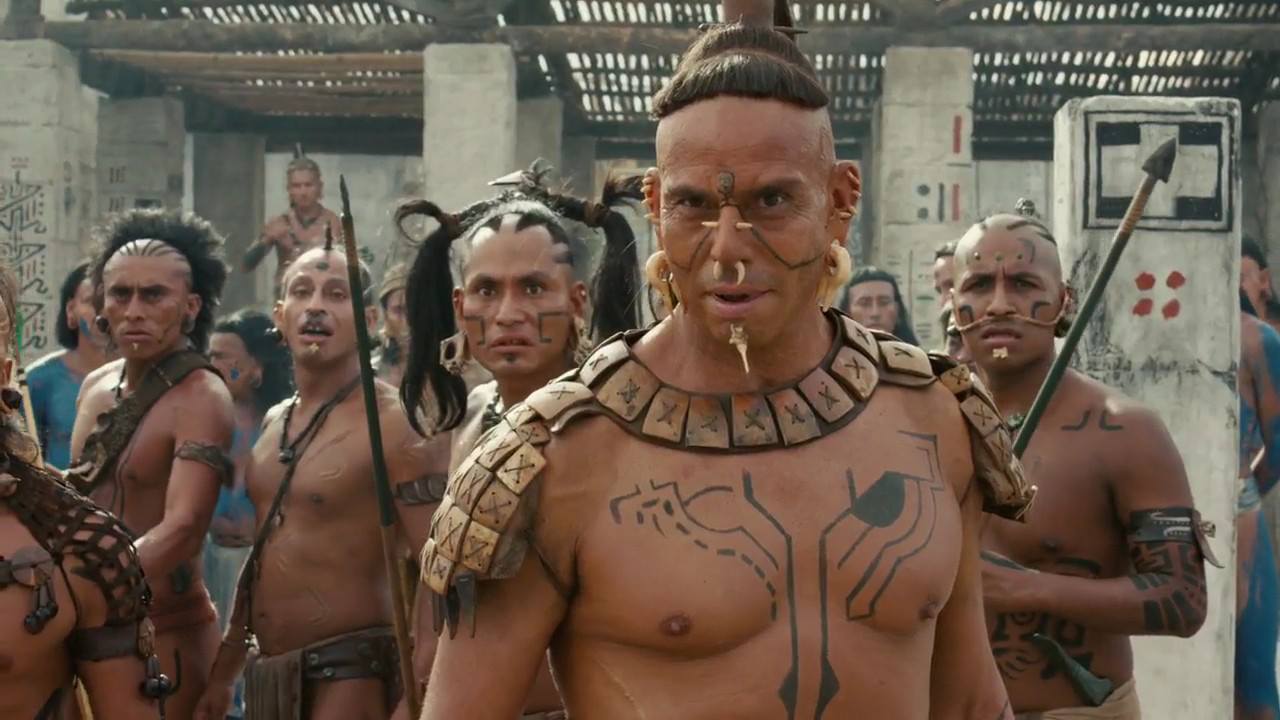18-Year-Old Historical Drama Is Being Hailed as “The Best Movie of All Time” by Viewers

Every once in a while, a film transcends the screen, weaving itself into the cultural fabric and stirring conversations for years to come. These are the stories that captivate our minds and hearts, long after the credits roll. One such movie—a historical drama released nearly two decades ago—has recently been reignited in public discourse, with some calling it “the best movie of all time.”
Why does this particular film continue to spark admiration, debate, and reflection, even today? Perhaps it’s the breathtaking visuals that immerse us in a bygone era. Or maybe it’s the gripping narrative that forces us to confront universal questions about survival, morality, and the fragility of civilization. But above all, this is a story that challenges us to see beyond the surface, to uncover the lessons hidden in its artistry, and to ask: What does it truly mean for a film to stand the test of time?
A Journey into Survival and a Lost Civilization
Released in 2006, Apocalypto is an epic historical drama that plunges viewers into the heart of the late Mesoamerican period, around the year 1517. Directed by Mel Gibson, the film tells the story of Jaguar Paw, a young hunter whose tranquil village life is shattered by a brutal raid. Captured and bound for human sacrifice, Jaguar Paw must summon every ounce of courage and determination to escape captivity and reunite with his family, hidden deep within the jungle.
One of the film’s most striking features is its commitment to authenticity. The dialogue is delivered entirely in Yucatec Maya, a decision that immerses audiences in the cultural and historical context. By refusing to dilute the story with modern language, the filmmakers invite viewers to experience the era through a more authentic lens.
Shot on location in Mexico’s verdant jungles, the film’s lush visuals transport viewers to a world teetering on the brink of collapse. The production’s dedication to realism extends to its casting, featuring indigenous and Mexican actors. Rudy Youngblood’s portrayal of Jaguar Paw is particularly noteworthy, blending raw emotional intensity with physical endurance to bring the character’s journey to life.
Upon its release, Apocalypto received widespread attention for its visceral storytelling and stunning cinematography. Critics marveled at its visual power, with Variety’s Todd McCarthy describing it as “a remarkable film…offering hitherto unseen sights of exceptional vividness and power.” Yet, the film also drew scrutiny for its depiction of Mayan culture, raising questions about how much artistic liberty can—or should—be taken when portraying history.
A Film That Divides Yet Captivates
 Image source: Apocalypto page on Facebook
Image source: Apocalypto page on Facebook
Since its release, Apocalypto has sparked passionate reactions from audiences and critics alike, solidifying its reputation as a film that both mesmerizes and provokes. With its visceral storytelling and stunning visuals, it continues to draw praise, even as it ignites debates about its historical and cultural accuracy.
The film holds a 65% approval rating on Rotten Tomatoes, where critics describe it as “a brilliantly filmed, if mercilessly bloody, examination of a once great civilization.” On Metacritic, it scores a respectable 68 out of 100, indicating “generally favorable reviews.” IMDb users, meanwhile, rate it 7.8 out of 10 based on over 328,000 votes, showcasing enduring admiration from viewers worldwide.
While critics have lauded the film’s technical achievements, such as its cinematography and immersive production design, audience reactions often highlight its gripping narrative. Many viewers describe Apocalypto as an unforgettable experience, with comments like, “They don’t make movies like this anymore” and “A phenomenal masterpiece that keeps you on the edge of your seat.”
Prominent voices in Hollywood have also added their acclaim. Director Martin Scorsese called it “a vision,” praising its exploration of the violence within civilizations. Actor Robert Duvall went further, describing it as “maybe the best movie I’ve seen in 25 years.” These endorsements underscore the film’s impact within the industry and its broader cultural resonance.
Despite its controversial elements, Apocalypto earned three Academy Award nominations—for Best Makeup, Best Sound Editing, and Best Sound Mixing. It also garnered recognition from the BAFTA Awards and Golden Globes, cementing its place as a technical and artistic triumph.
Controversies and Criticisms: A Story That Sparks Debate
 Image source: Apocalypto page on Facebook
Image source: Apocalypto page on Facebook
While Apocalypto has been praised for its technical brilliance, it has not escaped controversy. The film’s depiction of Mayan civilization has drawn sharp criticism from scholars and cultural commentators, sparking debates about historical accuracy, representation, and the ethical responsibilities of filmmakers.
Historical Inaccuracies
One of the film’s most debated aspects is its portrayal of the Maya civilization. Apocalypto emphasizes large-scale human sacrifice and societal collapse, elements more commonly associated with the Aztec culture. Critics argue that this portrayal exaggerates violence within Maya society, overshadowing their profound achievements in art, architecture, and science. Anthropologist Traci Ardren remarked that the film “repackages racist notions of native people as one-dimensional primitives,” perpetuating harmful stereotypes.
Additionally, the film amalgamates details from various Mesoamerican cultures, creating a narrative that blurs historical lines. For example, the depiction of mass human sacrifices aligns more closely with Aztec rituals, yet it is placed in a distinctly Mayan setting. This blending of cultural elements has raised concerns about historical distortion and its impact on public perceptions.
Cultural Representation and Ethical Concerns
The focus on violence and savagery in Apocalypto has led some to interpret it as a justification for colonial conquest. By presenting the Maya as a civilization doomed by its own brutality, the film risks reinforcing narratives that diminish the complexities and richness of indigenous cultures. Anthropologist Stephen Houston criticized this framing, stating, “This is Mel Gibson’s Maya. This is Mel Gibson’s sadism.”
Furthermore, the absence of a balanced portrayal of the Maya’s cultural achievements—such as their advancements in mathematics, astronomy, and art—has been seen as a missed opportunity to educate and inspire. Critics argue that the film’s narrow focus on violence reduces a vibrant and multifaceted civilization to a grim caricature.
Mel Gibson’s reputation has also influenced the perception of Apocalypto. Known for his polarizing works and personal controversies, Gibson has faced accusations of cultural insensitivity and historical revisionism in previous projects. These criticisms have cast a shadow over the film, with some questioning the intentions behind its depiction of indigenous cultures.
Cinematic Achievements: A Visual and Technical Triumph
 Image source: Apocalypto page on Facebook
Image source: Apocalypto page on Facebook
Despite its controversies, Apocalypto is widely celebrated for its groundbreaking technical achievements and immersive storytelling. The film’s attention to detail and innovative approach have left an indelible mark on cinema.
- Stunning Cinematography: Led by cinematographer Dean Semler, Apocalypto utilizes high-definition digital cameras to bring the lush Mesoamerican jungle to life. The vivid clarity of the natural landscapes, combined with dynamic camera work during action sequences, creates an experience that draws viewers into the heart of Jaguar Paw’s perilous journey. Critics have described the cinematography as “masterful,” with its visual depth adding to the film’s intensity and realism.
- Authentic Production Design: The film’s production design meticulously reconstructs aspects of Mayan civilization, from intricate architecture to detailed costumes. To achieve this authenticity, the filmmakers consulted historians and anthropologists, while also casting indigenous actors and using the Yucatec Maya language. These choices enrich the story’s historical texture, offering a rare glimpse into the era’s cultural atmosphere. While debates persist about the accuracy of the narrative, the commitment to detail in these areas is undeniable.
- Direction and Pacing: Mel Gibson’s direction emphasizes relentless pacing, ensuring that tension remains high throughout the film. The narrative weaves intimate character moments with expansive action sequences, balancing Jaguar Paw’s personal survival story against the backdrop of a civilization in turmoil. Critics have described the film as “a fleet-footed action adventure,” with Gibson’s storytelling approach maintaining a gripping rhythm from start to finish.
- Recognized Excellence: The film’s technical prowess has earned it significant accolades. Apocalypto received three Academy Award nominations, including Best Makeup, Best Sound Editing, and Best Sound Mixing, highlighting its excellence in crafting an immersive sensory experience. It also received recognition from the BAFTA Awards and the Golden Globes, underscoring its impact as a cinematic achievement.
Through its technical brilliance and innovative storytelling, Apocalypto has solidified its place as a visually stunning and artistically ambitious film, leaving a lasting legacy in the world of cinema.
Apocalypto—A Polarizing Masterpiece
Eighteen years after its release, Apocalypto remains a film that both captivates and divides. Its breathtaking visuals, gripping narrative, and innovative approach to historical storytelling have cemented its place as a cinematic achievement. At the same time, its portrayal of Mayan civilization has sparked important debates about the balance between artistic interpretation and cultural responsibility.
By challenging viewers to reflect on the rise and fall of civilizations and the fragility of societal values, Apocalypto achieves what few films can: it transcends entertainment to become a lasting conversation piece. Whether seen as a masterpiece or a flawed interpretation, it endures as a reminder of cinema’s power to provoke thought, inspire action, and reveal deeper truths about humanity.
Featured Image source: Apocalypto page on Facebook
Loading...






